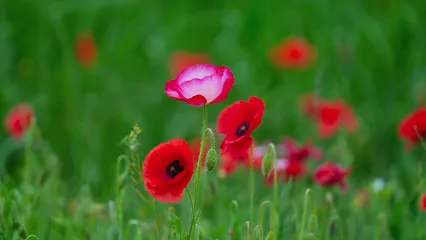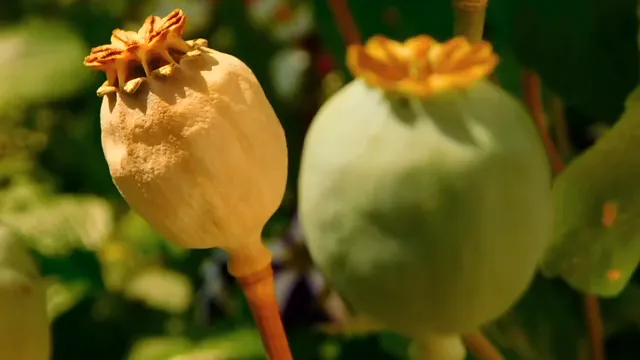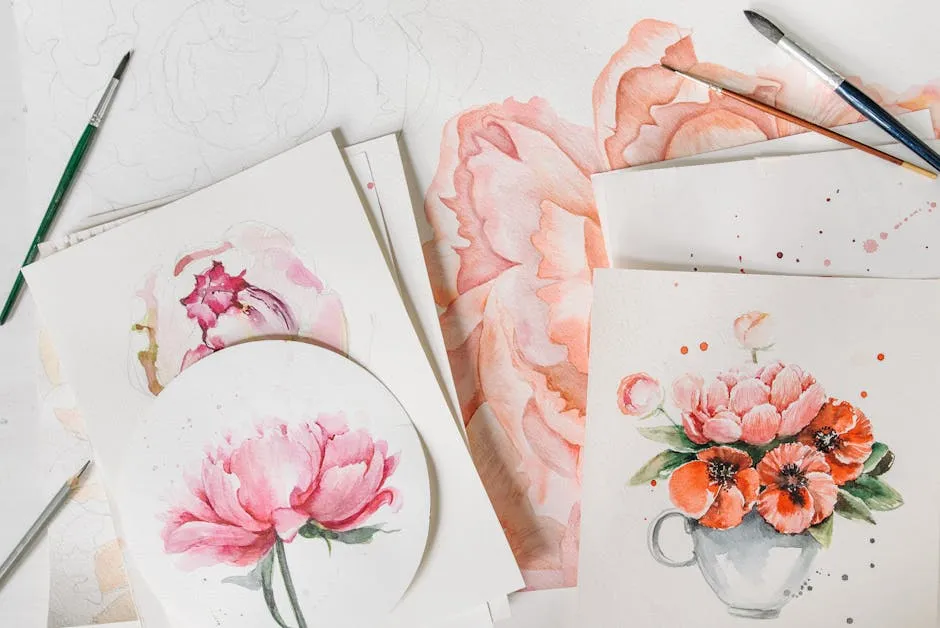

Poppy Flowers: A Comprehensive Guide to Their Beauty and Significance
Introduction
Poppy flowers are truly captivating. Their vibrant colors and delicate petals bring joy to any garden. These blooms have a rich history, serving various purposes. From ornamental displays to medicinal applications, poppies are versatile plants. This article aims to highlight the beauty and significance of poppy flowers, exploring their uses and characteristics.
If you’re looking to add some poppy magic to your garden, consider a Poppy Flower Gardening Kit. It’s an all-in-one solution that brings the beauty of these blooms right to your backyard!
Summary and Overview
Poppy flowers belong to the Papaveraceae family. They are cherished for their stunning appearance and unique features. With various types, they suit different gardening styles. Historically, poppies have held cultural significance, symbolizing peace and remembrance. They play a vital role in gardens and floral arrangements, making them popular among gardeners. This article will cover the types of poppy flowers, cultivation tips, cultural symbolism, and their uses.
To ensure your poppies thrive, consider using Organic Garden Fertilizer. This will help provide the nutrients your poppies need for vibrant blooms!

Types of Poppy Flowers
Characteristics of Popular Species
Poppies come in several species, each with distinct traits.
- 1. Papaver somniferum: Known as the opium poppy. It can reach heights of about 1.5 meters and blooms in shades of white, pink, and purple. Edible seeds come from this species.
- 2. Papaver rhoeas: Commonly called the corn poppy, it grows to about 60 centimeters with bright red flowers. This species is often associated with remembrance.
- 3. Papaver orientale: The oriental poppy reaches heights of 90 centimeters, showcasing large, vibrant flowers in red, orange, and white. Its striking appearance makes it a garden favorite.
Poppies typically bloom from spring to early summer. They can be annual, biennial, or perennial, depending on the species. Their unique characteristics make them suitable for both ornamental and edible uses. The Papaveraceae family contains over 100 species, offering a variety of flower types for any garden.

Explore your local nurseries to find the perfect poppy varieties for your garden! And don’t forget to check out some Planting Soil Mix to give them the best start!
Growing Poppy Flowers
Cultivation Tips
Growing poppy flowers can be a rewarding experience. These stunning blooms thrive in well-drained, fertile soil. Aim for a pH between 6.0 and 7.0 for optimal growth. Poppies prefer full sun, so choose a spot with at least six hours of direct light daily. They can be sensitive to water, so don’t overdo it. A light watering schedule works best, allowing the soil to dry slightly between sessions.
When it comes to planting, you have two main options: direct sowing or transplanting. Most gardeners find that direct sowing yields the best results. Scatter the seeds in early spring or fall for a summer bloom. If you choose to transplant, do so carefully to avoid disturbing the delicate roots.
Timing is crucial for poppy flowers. Plant them after the last frost in spring. This timing helps ensure healthy growth and vibrant blooms. Poppies typically grow to about 60 to 90 centimeters tall, depending on the species. Most varieties bloom from late spring to early summer, delighting gardeners with their colorful display.

Watch out for common pests like aphids and slugs. They can harm your plants if not managed. Diseases like powdery mildew might also affect poppies, especially in humid climates. Regular monitoring and good air circulation can help prevent these issues.
With patience and proper care, you’ll enjoy a garden filled with beautiful poppies. Have you tried growing them? Share your experiences in the comments! To keep your hands safe while gardening, a good pair of Garden Gloves is essential!
Propagation Techniques
Propagating poppy flowers is a straightforward process. To start, gather seeds from mature blooms once they dry out. This usually happens in late summer. Allow the seed pods to turn brown before harvesting. Store the seeds in a cool, dry place until you’re ready to plant.
When it’s time to sow, you can start seeds indoors or outdoors. If starting indoors, use Seed Starting Trays filled with a light potting mix. Keep the trays in a warm area with plenty of light. Seeds germinate best at temperatures between 18°C and 21°C. Outdoors, sow seeds in a prepared garden bed after the frost has passed.
Poppies often have a good germination success rate, usually around 70-80%. However, this can vary based on the species. For example, Papaver somniferum tends to germinate more reliably than others.

Now that you know how to propagate, why not give it a try? Share your results with us!
Poppy Flowers in Culture and Symbolism
Historical Significance
Poppies have woven themselves into the fabric of human history. Many cultures have revered these blooms for their beauty and symbolism. They have appeared in art, literature, and rituals for centuries. One of the most notable references is in the poem “In Flanders Fields,” where poppies symbolize the sacrifice of soldiers during World War I.
In Commonwealth nations, poppies are worn on Remembrance Day to honor those who lost their lives in conflict. This tradition began after the war, signifying peace and remembrance. The choice of the red poppy was inspired by the sight of these flowers growing in the war-torn fields of Europe.
Historically, the use of poppies dates back thousands of years. Ancient civilizations recognized their calming properties and often associated them with sleep and death. In Greek and Roman cultures, poppies were offered to the deceased as a symbol of eternal rest.

Statistics show that millions wear poppies every year to commemorate fallen soldiers, highlighting their enduring significance. Reflecting on poppies in your own life can deepen your appreciation for their cultural importance. What do they symbolize for you?
Artistic Representations
Poppies have inspired countless artists throughout history. Vincent van Gogh’s iconic painting “Poppy Flowers” is a prime example. Created in 1887, this work showcases vibrant colors and bold brush strokes. Van Gogh’s approach captures the essence of these flowers beautifully. His use of contrasting colors creates a striking visual impact that still resonates today. You can get a stunning Vincent van Gogh: Poppy Flowers (Art Print) for your home!
Many artists have drawn inspiration from poppies, leading to their frequent depiction in art history. These flowers symbolize fleeting beauty, often found in still-life compositions. Their vivid hues make them a favorite subject among painters.

Numerous exhibitions have showcased poppy-themed artworks, sometimes fetching high prices at auctions. For instance, Van Gogh’s “Poppy Flowers” was stolen in 2010, and its theft drew significant media attention. This illustrates how poppies captivate not just gardeners, but art lovers too.
Visiting galleries or museums that feature floral art can be a delightful experience. You’ll get to appreciate the beauty of poppies and their artistic legacy firsthand. Have you seen any poppy artworks that left an impression on you?
Uses of Poppy Flowers
Culinary and Medicinal Applications
Poppy seeds are tiny powerhouses. They’re often used in cooking for their delightful crunch. You can sprinkle them on salads, bagels, or breads. Did you know they’re also rich in nutrients? Just a tablespoon of poppy seeds packs about 50 calories, 1.5 grams of protein, and 3 grams of dietary fiber.
Beyond their culinary charm, poppy seeds have medicinal properties too. Traditionally, they have been used in various cultures for their soothing effects. They contain small amounts of morphine and codeine, which are known for their pain-relieving qualities. Modern herbalists often recommend Poppy Seed Oil for its anti-inflammatory benefits.

Statistically speaking, poppy seeds are loaded with calcium, iron, and magnesium. These minerals contribute to bone health and muscle function. As a bonus, the oil extracted from these seeds adds flavor and health benefits to dishes.
Looking to try something new? Why not bake a batch of poppy seed muffins? Or, if you prefer natural remedies, consider making a soothing poppy seed tea. Both options highlight the versatility of this tiny seed!
Ornamental Uses
Poppies are not just for the kitchen; they shine in gardens too! Their vibrant blooms add a splash of color to any floral arrangement. Poppies are often used in bouquets for weddings and special events. Their delicate nature makes them a favorite among florists.

When planting poppies, consider sunny spots in your garden. They thrive in well-drained soil and enjoy full sunlight. If you’re arranging cut flowers, opt for poppies with strong stems. This will help them last longer in a vase.
Poppies rank high in popularity among floral designers, often chosen for their striking hues. They can create stunning focal points in any arrangement. To keep your garden looking fabulous, consider using Garden Pruners for easy maintenance!
Thinking of adding them to your next floral project? Consider incorporating poppies for a touch of elegance and charm!
FAQs
What are the most common types of poppy flowers?
The common types of poppy flowers include *Papaver somniferum*, *Papaver rhoeas*, and *Papaver orientale*. Each type has unique characteristics and blooms in vibrant colors.
How do you grow poppy flowers successfully?
For successful growing poppy flowers, provide well-drained soil and full sunlight. Plant seeds in early spring or fall for the best blooms. Explore raised bed gardening tips and tricks for optimal results.
Are poppy seeds safe to eat?
Yes, edible poppy seeds are safe to eat. They are often used in baking and cooking, adding a nutty flavor to dishes.
What do poppy flowers symbolize?
The symbolism of poppy flowers includes peace and remembrance, particularly in relation to fallen soldiers. They are often worn on Remembrance Day.
Can poppies be used in floral arrangements?
Absolutely! Poppies in floral arrangements add a stunning pop of color. Their delicate beauty makes them a favorite among florists.
If you’re interested in keeping track of your gardening journey, consider a Garden Journal to document your progress!
Please let us know what you think about our content by leaving a comment down below!
Thank you for reading till here 🙂 And if you ever want to enjoy the soothing aroma of nature, an Aromatherapy Diffuser can do wonders for your space!
If you’re looking for more gardening insights, check out this comprehensive guide on raised bed gardening tips and tricks!
All images from Pexels



